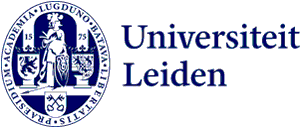
Kiem project develops hyper-realistic 3D environment for research purposes
Leiden University's Kiem grant is designed to give new interdisciplinary ideas from staff a boost. Thanks to the grant, Jelle Brands and Nathan Saucier were able to test the research possibilities of a hyper-realistic 3D environment. With promising results.
The interdisciplinary Kiem project ‘A crystal ball’ tested the application of photorealistic 3D environments for (criminology) research. As far as we know, this is the first time within Leiden University that the so-called Gaussian Splatt technique was used. Based on photos or videos, this new technique reconstructs 3D environments you can walk through with VR glasses. What is also special about this is that, despite the relatively short time needed to build the environment, the number of frames per second is very large. As a result, the environments become very realistic. After a development phase, this environment is already being used in the ongoing ‘Virtual Leiden’ study, which tests how users experience a virtual urban environment. Leiden municipality is also involved in this research.
The project is a collaboration between Jelle Brands (Criminology) and Nathan Saucier (Leiden Learning and Innovation Centre). The two decided to work together after a workshop by Nathan on the Gaussian Splatt technique. Jelle, who has always been interested in the possibilities of VR in research, suggested they submit a Kiem application together.
What did the Kiem project bring you?
Nathan: ‘Before we learned about the Kiem grant we had already wanted to do this project. The grant really gave us the space to experiment with the technology and to thoroughly develop a process to build this kind of 3D environment. A process that we can also apply to future projects and disseminate to other people within the university. We are very proud of the result.’
How did your interdisciplinary collaboration go?
Nathan: ‘Smoothly, but that was also because I didn't have to delve very deeply into complicated theory. I find the basic principles of social sciences quite accessible.'
Jelle: ‘Above all, I learned a lot from Nathan about the possibilities of this technique. I tagged along while photographing the Leiden location used for the 3D environment. I was also involved in technical decisions precisely because I wanted to learn a lot about the process.’
So would recommend colleagues to apply for a Kiem?
Jelle: ‘Definitely. The bar for applying is fairly low and the conditions are flexible. I do have to say that we were perhaps a bit lucky because we had met before and thus had a concrete plan for a project. If you have an idea for an interdisciplinary project, but you don't know if there is anyone within the university with whom you can start that project, it might be more difficult.’
Nathan: ‘The application is awarded by draw, so there is no guarantee that you will get the grant. But precisely because of the low bar and flexibility, you actually have little to lose by applying.’
Would you like to apply for a Kiem yourself? Deadline is 6 May!
Researchers, teaching professionals and support staff at Leiden University can all apply for a Kiem grant 2025 - 2026 until Monday 6 May, 09.00h. Look here for the application conditions and more information.
Watch a video impression of the Kiem grant draw 2024:
